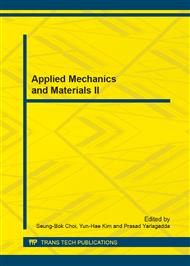p.681
p.686
p.690
p.697
p.701
p.705
p.710
p.714
p.718
Numerical Study on the Influence of Sleeve-Rib Space on the Static Response of Grouting-Sleeve Reinforcement-Connection Component
Abstract:
According to the actual structure of grouting sleeve, the ABAQUS finite element model of grouting-sleeve reinforcement-connection component was established. By changing sleeve-rib space, the influence of sleeve-rib space on the stress and the displacement distribution at grouting material were gotten. Numerical simulation shows that with the decrease of sleeve-rib space, the internal force distribution of grouting material tends to be uniform. Under axial tension load, with the sleeve-rib space of 14mm, the maximum stress of grouting material is lower than its strength, which makes grouting-sleeve reinforcement-connection component to be in a stable work condition.
Info:
Periodical:
Pages:
701-704
Citation:
Online since:
December 2013
Authors:
Price:
Сopyright:
© 2014 Trans Tech Publications Ltd. All Rights Reserved
Share:
Citation:


